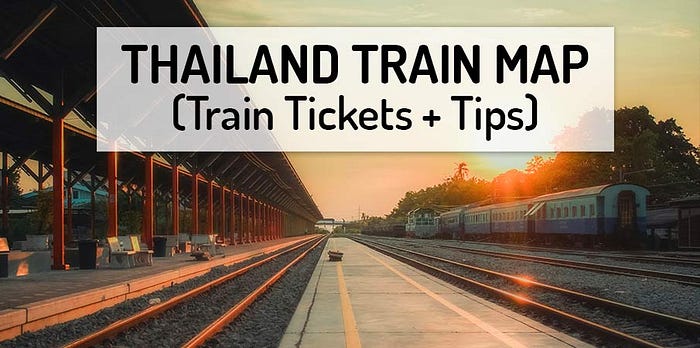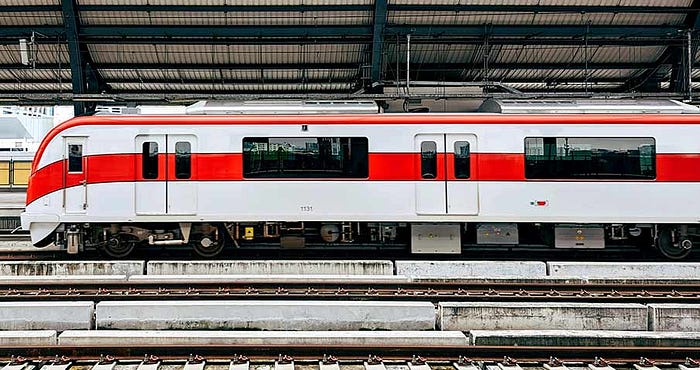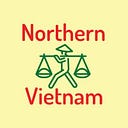THAILAND TRAIN MAP — Tickets + Tips ☀️

🚆 Navigating Thailand’s Railway System: A Comprehensive Guide to Stations, Network, Train Tickets, and Routes
Thailand’s railway system offers travelers an enchanting journey through lush landscapes, bustling cities, and cultural treasures. With a network spanning across the country, the Thailand Railway Map is a gateway to exploration, connecting vibrant cities, serene towns, and picturesque countryside. This comprehensive guide delves into the intricacies of Thailand’s railway system, from stations to network coverage, ticketing options, and popular train routes, providing invaluable insights for both tourists and locals alike.
🏫 Railway Stations in Thailand:
Thailand boasts a plethora of railway stations, each serving as a hub for transportation and a gateway to diverse destinations. From the iconic Hua Lamphong Station in Bangkok, exuding colonial charm, to the quaint stations nestled amidst verdant countryside, travelers are spoiled for choice. Major stations like Bang Sue Junction, Phitsanulok, Chiang Mai, and Surat Thani cater to both domestic and international travelers, facilitating seamless journeys across the country.
🚉 Thailand Railway Network:
The Thailand Railway Network encompasses a vast expanse of tracks, weaving through bustling metropolises, idyllic towns, and scenic landscapes. The network spans over 4,000 kilometers, connecting major cities such as Bangkok, Chiang Mai, and Hat Yai, while also reaching remote regions, offering a glimpse into the country’s diverse tapestry. With multiple lines crisscrossing the nation, travelers can embark on unforgettable adventures, whether for leisure or business, while experiencing the rich tapestry of Thai culture along the way.
🎫 Train Tickets in Thailand:
Procuring train tickets in Thailand is a straightforward process, with various options catering to different preferences and budgets. Tickets can be purchased at railway stations, online through official websites, or via third-party booking platforms. Travelers can choose from different classes, including first, second, and third class, each offering varying levels of comfort and amenities. Additionally, special promotions and discounts are often available for advance bookings, making train travel an affordable and convenient option for exploring Thailand.
🚊 Train Routes in Thailand:
Embarking on a journey aboard Thailand’s trains promises unparalleled experiences, with routes traversing diverse landscapes and cultural landmarks. The Northern Line, stretching from Bangkok to Chiang Mai, takes passengers through lush countryside, past verdant rice fields and quaint villages, offering a glimpse into rural life. The Southern Line, on the other hand — from Bangkok to Surat Thani, snakes along the picturesque coastline, granting travelers breathtaking views of pristine beaches and crystal-clear waters. Other notable routes include the Eastern Line — from Bangkok to Nong Khai, Western Line, and Northeastern Line, each showcasing unique facets of Thailand’s natural beauty and cultural heritage.
Conclusion:
The Thailand Railway Map is more than just a transportation network, it’s a gateway to discovery, connecting travelers to the heart and soul of the country. From bustling urban centers to serene countryside retreats, Thailand’s railway system offers a myriad of experiences waiting to be explored. Whether embarking on a leisurely journey through scenic landscapes or commuting between bustling cities, the railway network epitomizes the charm and diversity of Thailand, making every trip a memorable adventure. So, hop aboard, and let the rhythm of the rails guide you through the enchanting wonders of Thailand.

Exploring Train Classes in Thailand: Comfort and Convenience Across Routes
When it comes to traveling by train in Thailand, passengers are presented with a range of class options tailored to their preferences and budgets. From luxurious first-class cabins to budget-friendly third-class compartments, each class offers a unique experience along with access to various routes spanning the length and breadth of the country. Let’s delve into the distinct features and routes associated with each train class in Thailand.
➡️ 1st Class: Luxury and Comfort
Description: First-class cabins in Thailand’s trains provide passengers with spacious seating arrangements coupled with additional amenities, often including sleeper options for overnight journeys. Passengers in this class may also enjoy access to exclusive lounges and dining areas, enhancing the overall travel experience.
Routes: The first-class experience is typically offered on main routes, catering to long-distance travelers seeking comfort and luxury. Prominent routes include Bangkok to Chiang Mai, Bangkok to Surat Thani, and Bangkok to Hat Yai, allowing passengers to traverse the length of the country in style and elegance.
➡️ 2nd Class: Comfort and Convenience
Description: Second-class cabins offer comfortable seating arrangements, sometimes with sleeper options for overnight trips. Passengers traveling in this class may also have access to onboard food and beverage services, adding to their convenience during the journey.
Routes: Second-class compartments are available on various routes, catering to both domestic and international travelers. These routes often include journeys to major tourist destinations such as Ayutthaya, Pattaya, and Phuket, providing passengers with a comfortable and convenient way to explore Thailand’s cultural and natural attractions.
➡️ 3rd Class: Budget-Friendly Travel
Description: Third-class seating provides basic accommodations suitable for shorter journeys. While these compartments may be crowded during peak hours, they offer an affordable option for budget-conscious travelers looking to explore Thailand’s diverse destinations.
Routes: Third-class compartments are commonly found on shorter routes and commuter services, catering to both local commuters and budget travelers. Popular routes include Bangkok to Ayutthaya and Bangkok to Hua Hin, allowing passengers to navigate between urban centers and nearby towns at minimal cost.

🚉 Explore Thailand’s Popular Railway Routes:
- Bangkok → Chiang Mai: Journey from the bustling capital to the charming northern city of Chiang Mai, passing through picturesque landscapes and cultural landmarks.
- Bangkok → Surat Thani: Traverse from Bangkok to Surat Thani, gateway to the stunning islands of Koh Samui, Koh Phangan, and Koh Tao, known for their pristine beaches and vibrant nightlife.
- Bangkok → Hua Hin: Embark on a scenic journey from Bangkok to the coastal town of Hua Hin, famed for its beautiful beaches, royal palaces, and lively night markets.
- Nong Khai → Bangkok: Travel from Nong Khai to Bangkok, experiencing the serene beauty of Thailand’s northeastern region before arriving in the bustling capital city.
- Aranyaprathet → Bangkok: Explore the route from Aranyaprathet to Bangkok, passing through diverse landscapes and cultural sites, including the historic city of Ayutthaya.
- Ubon Ratchathani → Bangkok: Discover the journey from Ubon Ratchathani to Bangkok, immersing yourself in the rich cultural heritage and natural beauty of Thailand’s eastern region.
- Hat Yai → Bangkok: Venture from the vibrant city of Hat Yai to Bangkok, experiencing the dynamic contrasts between southern and central Thailand along the way.
- Chumphon → Bangkok: Travel from the coastal town of Chumphon to Bangkok, enjoying scenic views of the Gulf of Thailand before reaching the bustling capital.
- Bangkok → Pattaya: Experience the journey from Bangkok to the lively seaside resort of Pattaya, renowned for its vibrant nightlife, water sports, and entertainment options.
- Bangkok → Ayutthaya: Explore the historic route from Bangkok to Ayutthaya, UNESCO World Heritage Site and ancient capital of Thailand, home to magnificent temples and ruins.

🏫 Exploring Thailand’s Key Railway Stations:
- Hua Lamphong Railway Station (Bangkok): Serving as Bangkok’s primary railway terminal, Hua Lamphong stands as a bustling nexus connecting travelers to various regions of Thailand. Its iconic architecture and bustling ambiance encapsulate the vibrancy of the capital city’s transportation network, making it a vital hub for both domestic and international travelers.
- Krung Thep Aphiwat Central Terminal Station (Bangkok): As a central terminal station within Bangkok, Krung Thep Aphiwat plays a pivotal role in facilitating transportation within the city and beyond. Its strategic location and extensive network of routes make it an essential transit point for commuters and tourists alike, providing seamless connectivity to key destinations across Thailand.
- Chiang Mai Railway Station: Nestled in the heart of northern Thailand, Chiang Mai Railway Station serves as a gateway to the region’s cultural and natural wonders. From here, travelers embark on enchanting journeys through misty mountains, lush forests, and ancient temples, immersing themselves in the rich heritage of the north.
- Nong Khai Railway Station: Situated on the banks of the Mekong River, Nong Khai Railway Station serves as a vital link between Thailand and neighboring Laos. Beyond its role in cross-border travel, the station offers travelers a glimpse into the unique charms of northeastern Thailand, with its serene landscapes and vibrant local culture.
- Ubon Ratchathani Railway Station: Positioned in the heart of Ubon Ratchathani province, this railway station serves as a key transportation hub for travelers venturing into northeastern Thailand. Surrounded by verdant rice fields and tranquil rivers, Ubon Ratchathani Railway Station welcomes visitors with its warm hospitality and authentic local experiences.
- Aranyaprathet Railway Station: Located near the border with Cambodia, Aranyaprathet Railway Station serves as a bustling gateway for travelers crossing between the two countries. Beyond its significance as a border crossing point, the station provides a glimpse into the cultural diversity of eastern Thailand, with its bustling markets and friendly locals.
- Chumphon Railway Station: Situated on the Gulf of Thailand coast, Chumphon Railway Station serves as a vital transit point for travelers en route to popular beach destinations such as Koh Tao and Koh Phangan. Its coastal location and laid-back atmosphere make it a favorite stopover for those seeking sun, sand, and sea.
- Hua Hin Railway Station: As a charming coastal town renowned for its pristine beaches and royal heritage, Hua Hin Railway Station serves as a picturesque gateway to southern Thailand. Travelers arriving here are greeted by the station’s distinctive architecture, reminiscent of a bygone era, as they embark on a journey of relaxation and exploration.
- Surat Thani Railway Station: Serving as the main railway hub in Surat Thani province, this station acts as a gateway to the idyllic islands of Koh Samui, Koh Phangan, and Koh Tao. Beyond its role in island hopping, Surat Thani Railway Station offers travelers a taste of southern Thai hospitality and cuisine.
- Hat Yai Railway Station: Located in the bustling city of Hat Yai, this railway station serves as a major transportation hub for southern Thailand, offering connections to destinations across the region and beyond. Its vibrant atmosphere and bustling markets make it a vibrant stopover for travelers exploring the diverse landscapes and cultures of the south.
- Kanchanaburi Railway Station: Steeped in history and surrounded by natural beauty, Kanchanaburi Railway Station stands as a poignant reminder of Thailand’s past. Visitors to this station can explore nearby attractions such as the Bridge on the River Kwai and the Death Railway, gaining insight into the region’s World War II-era heritage.
- Pattaya Railway Station: Located in the bustling resort city of Pattaya, this railway station serves as a convenient entry point for travelers seeking sun, sand, and entertainment. From here, visitors can explore Pattaya’s vibrant nightlife, bustling markets, and scenic beaches, making it a popular destination for both local and international tourists.
⭐⭐⭐ BOOK a TOUR / ACTIVITY in Thailand ➜ ⭐⭐⭐


❓ FAQ — Thailand Railway Network + Map:
1. What is the Thailand Railway Network?
The Thailand Railway Network is a robust and expansive system of train routes that crisscross the country, serving as a vital mode of transportation for both locals and tourists. It encompasses an extensive network of tracks, connecting major cities, towns, and rural areas across Thailand. From the bustling metropolis of Bangkok to the tranquil countryside of the north and the pristine beaches of the south, the railway network offers a diverse range of destinations accessible by train.
2. How extensive is the Thailand Railway Network?
The Thailand Railway Network is one of the most extensive in Southeast Asia, covering over 4,000 kilometers of track. It stretches from the northernmost provinces of Chiang Mai and Chiang Rai to the southernmost regions of Songkhla and Narathiwat, with numerous branches and loops connecting various parts of the country. The network includes multiple lines, each serving different regions and offering a wide range of travel options for passengers.
3. What types of trains operate on the Thailand Railway Network?
The Thailand Railway Network operates a diverse fleet of trains, catering to different travel needs and preferences. These include commuter trains for short-distance travel within urban areas, express trains for long-distance journeys between major cities, and special tourist trains offering unique experiences such as scenic tours or cultural excursions. Additionally, there are freight trains for transporting goods and materials across the country.
4. Are there sleeper trains available on the Thailand Railway Network?
Yes, sleeper trains are available on select routes of the Thailand Railway Network, providing overnight accommodations for passengers traveling long distances. These sleeper trains offer various classes of sleeper berths, ranging from basic reclining seats to private cabins with beds, allowing passengers to rest comfortably during their journey.
5. How can I purchase train tickets for the Thailand Railway Network?
Train tickets for the Thailand Railway Network can be purchased through multiple channels for the convenience of passengers. These include ticket counters at railway stations, online booking through official websites or mobile apps, and third-party travel agencies or booking platforms. Advance reservations are recommended, especially during peak travel seasons, to secure desired seats and avoid disappointment.
6. What are the different classes available on Thailand’s trains?
Thailand’s trains offer a variety of classes to suit different travel preferences and budgets. These typically include first-class, second-class, and third-class seating options, each with its own set of amenities and comfort levels. First-class carriages often feature spacious seats, air conditioning, and additional services, while third-class carriages provide basic seating with open windows and fans for ventilation.
7. Can I access food and beverage services on Thailand’s trains?
Many trains on the Thailand Railway Network offer onboard food and beverage services, allowing passengers to purchase meals, snacks, and drinks during their journey. These services may vary depending on the type of train and route, with some long-distance trains even offering dining cars or restaurant services for a more comprehensive dining experience.
8. Are there any discounts available for train tickets in Thailand?
Yes, discounts and promotions are frequently offered for train tickets on the Thailand Railway Network, providing passengers with opportunities to save money on their travel expenses. These discounts may include early booking discounts, group discounts for large parties or tour groups, and special promotions during holiday seasons or off-peak periods.
9. How far in advance should I book train tickets in Thailand?
It is advisable to book train tickets as early as possible, especially for popular routes and during peak travel seasons, to secure seats and take advantage of any available discounts or promotions. Advance reservations can typically be made up to several months in advance, depending on the booking policies of the railway operator.
10. What are some popular train routes in Thailand?
Thailand boasts several popular train routes that showcase the country’s diverse landscapes, cultural heritage, and tourist attractions. Among the most sought-after routes are the journey from Bangkok to Chiang Mai, renowned for its scenic beauty and cultural richness, and the route from Bangkok to Surat Thani, which provides access to the stunning islands of Koh Samui and Koh Phangan.
11. How reliable is the Thailand Railway Network in terms of punctuality?
Overall, the Thailand Railway Network operates with a good level of punctuality, with trains typically running on schedule and adhering to timetables. However, occasional delays may occur due to factors such as inclement weather, track maintenance, or unforeseen operational issues. Despite this, the railway authorities strive to minimize disruptions and ensure a smooth travel experience for passengers.
12. Are there any scenic train routes in Thailand?
Yes, Thailand is home to several scenic train routes that offer passengers breathtaking views of the country’s natural landscapes and cultural landmarks. One notable example is the Northern Line from Bangkok to Chiang Mai, which winds its way through lush forests, misty mountains, and quaint villages, providing travelers with an immersive journey through northern Thailand’s picturesque countryside.
13. Can I bring luggage onboard Thailand’s trains?
Yes, passengers are allowed to bring luggage onboard Thailand’s trains, subject to certain size and weight restrictions. Most trains provide luggage storage areas or overhead racks for passengers to stow their bags during the journey, ensuring a comfortable and hassle-free travel experience.
14. Are there any amenities available at Thailand’s train stations?
Thailand’s train stations are equipped with a range of amenities and facilities to enhance the comfort and convenience of passengers. These may include ticket counters for purchasing tickets, waiting areas with seating and restrooms, food stalls or restaurants offering snacks and refreshments, and shops selling travel essentials or souvenirs.
15. Is there any assistance available for passengers with special needs on Thailand’s trains?
Yes, Thailand’s railway operators are committed to providing assistance and support to passengers with special needs or disabilities, ensuring that they can travel safely and comfortably. This may include wheelchair-accessible facilities, priority seating arrangements, and assistance from station staff or train crew as needed. Passengers requiring special assistance are encouraged to inform the railway authorities in advance to ensure that appropriate arrangements can be made for their journey.

